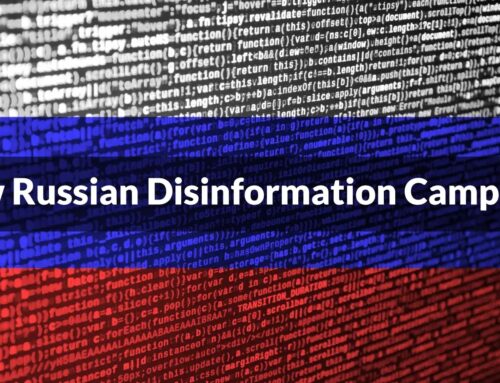
First-Ever Malicious MCP Server Found in the Wild Steals Emails via AI Agents
The landscape of cyber threats is constantly shifting, with adversaries leveraging novel approaches to compromise systems and steal data. A recent and particularly concerning development marks a new frontier in cyber espionage: the discovery of the first-ever malicious Model-Context-Prompt (MCP) server. This incident highlights a sophisticated attack vector, exploiting an npm package to covertly exfiltrate sensitive user emails via AI agents. Understanding the mechanics and implications of this new threat is crucial for cybersecurity professionals and developers alike.
What is an MCP Server and Why Does It Matter?
An MCP (Model-Context-Prompt) server is typically designed to facilitate interactions with AI models. It acts as an intermediary, managing the context of conversations and crafting prompts to achieve specific outcomes from AI agents. Imagine a system where an AI assists with email management: categorizing mail, drafting responses, or identifying key information. The MCP server is the backbone, ensuring these AI interactions are efficient and relevant.
The discovery of a malicious MCP server, specifically within the trojanized npm package postmark-mcp, represents a significant escalation. Threat actors have found a way to weaponize these AI-centric tools, turning them into covert data exfiltration mechanisms. This isn’t just about stealing data; it’s about leveraging the very infrastructure designed to enhance productivity and intelligence, for malicious purposes.
The postmark-mcp Trojan: A Deep Dive
The malicious npm package, identified as postmark-mcp, was not an isolated incident. Despite its insidious nature, it managed to achieve approximately 1,500 weekly downloads before detection. This level of adoption underscores the stealth and apparent utility of the package, luring developers into integrating compromised code into their projects.
The core of the attack lay in a cleverly concealed backdoor. Once integrated into a system, the trojanized package would surreptitiously copy every email processed by the legitimate Postmark service – an email delivery platform often used by applications – and forward it to a server controlled by the attacker. This mechanism allowed for continuous, undetected exfiltration of potentially vast amounts of sensitive information, including personal communications, business data, and login credentials.
The Role of AI Agents in Data Exfiltration
While the initial discovery points to the MCP server as the exfiltration point, the phrase “steals emails via AI agents” suggests a more sophisticated layer to this attack. It implies that the compromised MCP server might not just be passively forwarding emails, but actively utilizing AI capabilities within the attacker’s control to:
- Filter and prioritize data: AI agents could analyze exfiltrated emails, identifying and prioritizing messages containing specific keywords, sensitive data types (e.g., financial information, PII, login attempts), or communications from key individuals.
- Automate responses or social engineering: In more advanced scenarios, AI agents could even be used to craft convincing phishing emails or respond to queries using stolen context, extending the attack capabilities beyond mere data theft.
- Evade detection: AI could analyze network traffic patterns or email content to identify potential security measures, adapting exfiltration techniques accordingly to avoid detection.
This integration of AI into the attack chain marks a concerning evolution, making detection and mitigation significantly more challenging.
Specifics of the Attack and Its Implications
The incident surrounding postmark-mcp reveals several critical areas of concern:
- Software Supply Chain Attacks: This attack is a textbook example of a software supply chain compromise. By injecting malicious code into a seemingly legitimate and widely used npm package, attackers can reach numerous downstream applications and users without directly targeting them.
- Stealth and Persistence: The backdoor’s design enabled continuous data exfiltration without immediately triggering alarms. This persistence allows for long-term collection of sensitive information, making post-incident analysis and damage assessment complex.
- Data Privacy and Compliance: Organizations using compromised versions of
postmark-mcpcould face severe data privacy breaches, leading to regulatory fines, reputational damage, and loss of customer trust.
Remediation Actions
Addressing this type of sophisticated attack requires a multi-layered approach focusing on prevention, detection, and response.
- Audit npm Package Dependencies:
- Regularly audit all npm packages and their dependencies used in your projects. Utilize tools like npm audit or Snyk to identify known vulnerabilities and malicious packages.
- Action: Review
package.jsonandpackage-lock.jsonthoroughly for any suspicious or unverified packages, especiallypostmark-mcp.
- Implement Software Supply Chain Security:
- Employ tools and practices to verify the integrity and authenticity of software components throughout your development pipeline. This includes digital signatures and trusted registries.
- Action: Consider source code analysis tools and dependency checking as part of your CI/CD pipeline.
- Network Traffic Monitoring:
- Monitor outbound network traffic for unusual connections or data exfiltration attempts to unfamiliar servers.
- Action: Implement Network Intrusion Detection/Prevention Systems (NIDS/NIPS) and Security Information and Event Management (SIEM) solutions to correlate security events.
- Email Security Best Practices:
- Reinforce email security policies, including encryption for sensitive communications and robust spam/phishing filters.
- Action: Educate users about the risks of opening suspicious attachments or clicking malicious links.
- Regular Security Audits and Penetration Testing:
- Conduct regular security audits and penetration tests to identify potential vulnerabilities in your applications and infrastructure.
- Action: Focus on supply chain attacks and potential AI-driven threat vectors during assessments.
Relevant Tools for Detection and Mitigation
| Tool Name | Purpose | Link |
|---|---|---|
| npm audit | Identifies vulnerabilities in npm package dependencies. | https://docs.npmjs.com/cli/v10/commands/npm-audit |
| Snyk | Developer security platform for finding and fixing vulnerabilities in code, dependencies, containers, and infrastructure as code. | https://snyk.io/ |
| OWASP Dependency-Check | Identifies project dependencies and checks if there are any known, publicly disclosed vulnerabilities. | https://owasp.org/www-project-dependency-check/ |
| Sniffle (Network Sniffer) | Network protocol analyzer to capture and inspect network traffic for anomalous behavior. | https://www.wireshark.org/ (Wireshark is a popular example) |
Conclusion
The discovery of the first malicious MCP server leveraging AI agents for email exfiltration marks a critical juncture in cybersecurity. It underscores the evolving sophistication of adversaries and their willingness to weaponize emerging technologies. For IT professionals, security analysts, and developers, the key takeaways are clear: vigilance in software supply chain security, robust dependency auditing, and comprehensive network monitoring are no longer optional. Proactive measures and an understanding of AI’s potential role in future attacks are essential to safeguarding sensitive data against these advanced threats.





